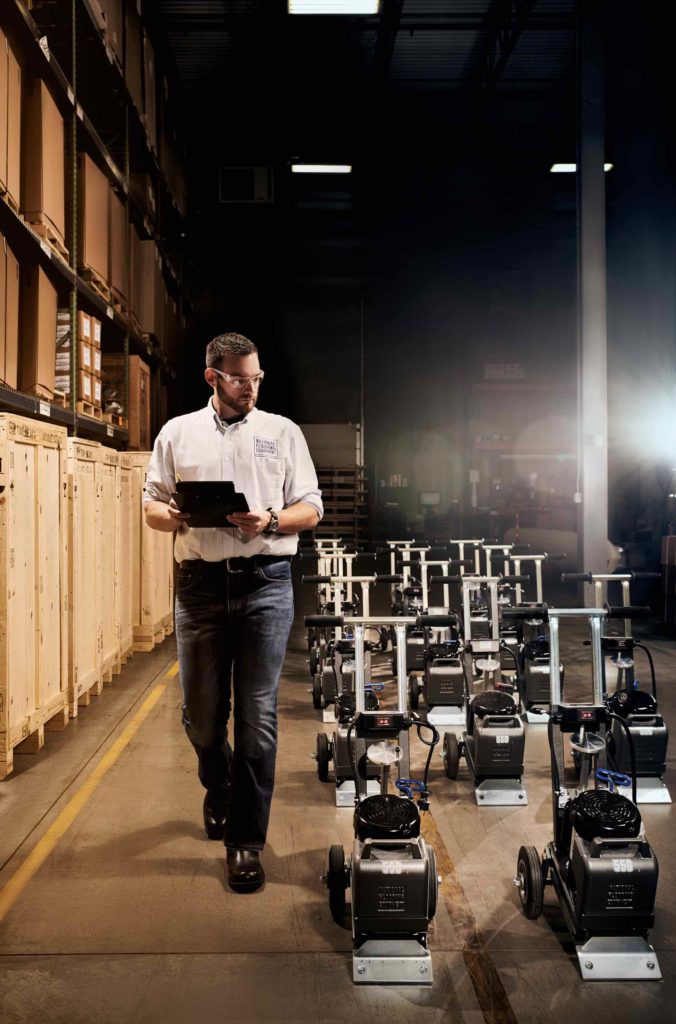When working in food processing facilities, contractors must be aware that all aspects of the job, from dust management to the right kind of flooring, are highly regulated. Oscar Peralta advises contractors on how to ensure regulatory compliance when preparing surfaces for the food industry
The food and beverage industry is the UK’s largest manufacturing sector and employs over one fourth of the country’s workforce. As the sector expands, food processing plants often need to renovate their buildings to make sure that they fit increased production needs and comply to the most recent regulations.
But what do contractors need to consider before undertaking a job in a food processing plant?
Safety is the first ingredient
The main challenge of working in food processing plants is represented by numerous standards and regulations for what concerns environmental protection, human health and workplace safety.

For example, in the US the Environmental Protection Agency (EPA) imposes a range of standards that determine the amount of Volatile Organic Compound (VOC) that can be emitted. These emissions are released by products used during the preparation or remediation of the substrate, such as cleaners, adhesives and even the floor coatings or floor coverings themselves.
VOCs need to be kept under control because of their negative impact on the environment and the human health and their ability to either penetrate the groundwater in the vicinity of the plant, or contaminate the food produced in the facility, making the final product unacceptable.
Another example of these regulations is the Silica Dust Exposure Regulations implemented by the Occupational Safety and Health Administration (OSHA) in 2017 to protect workers’ pulmonary health.
During surface preparation or remediation, silica dust is released in the air as a result of grinding or shot blasting.
When inhaled in high amounts or for prolonged periods, this dust can lead to a variety of respiratory complications, such as a long-term lung condition known as silicosis.
Consequently, contractors must manage dust using the right equipment. The safest method is to rely on an ioniser that electronically charges the air in the room, making dust and other pollutants quickly fall to the ground, where they will be appropriately collected.
The right flooring
Not all types of flooring may be used in a food processing facility. The Food and Drug Administration (FDA) and the U.S. Department of Agriculture (USDA) have determined that floor coverings in these plants must be anti-slip, easy to clean and disinfect, and resistant to the many chemical and mechanical aggressions that they will be subjected to.
Added bonus: as well as being performant, some of these flooring can be highly decorative.
Epoxies are some of the most popular, since they allow for a wide variety of textures and colours and are ideal to create non-slip and skid-resistant surfaces. They offer outstanding adhesion, withstand abrasive substances and thermal and mechanical shocks very well, and are low in volatile organic compounds. They also have fast curing properties to help minimise downtime.
Another alternative is offered by polyurethane floorings, which are very popular in the food industry. These coating have low odour during application and are seamless and easy to clean once dried.
Additionally, they have extremely fast drying capabilities, which allow the plant to be operational in as little as six hours after posing.
Finally, one more possibility is represented by methyl methacrylate (MMA) coatings. These can be applied at relatively low temperatures, dry quickly, are low in odour and therefore reduce the risk of imparting an unpleasant taste or odour to the processed food. For this reason, MMA coatings are often used in freezers or other cold-storage areas.
Prior to posing these coverings, it is essential to prepare the surface correctly by making sure that it is structurally sound and repairing eventual cracks and holes. It’s also necessary to conduct a moisture and alkaline test.
Excess moisture coming from rain, cooking, or the construction process itself can destabilise your flooring, buckle it, or lift it right off the concrete.
In this case, a moisture mitigation system is necessary. On the other hand, excess alkaline will consume epoxy coatings, causing it to bubble and split.
Who can help me?
The food processing industry is subject to rapidly changing regulations, so it’s important to work with trustworthy partners that can adequately advice you. National Flooring Equipment has a dedicated team of experts to support, train and advice contractors at every step. Don’t get lost in the regulation jungle, just give us a call to get the support you need!
Oscar Peralta is West Coast territory manager for surface preparation equipment manufacturer National Flooring Equipment.
 Engineer News Network The ultimate online news and information resource for today’s engineer
Engineer News Network The ultimate online news and information resource for today’s engineer





